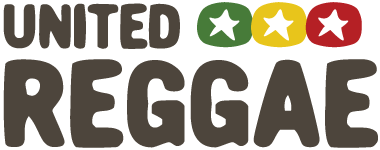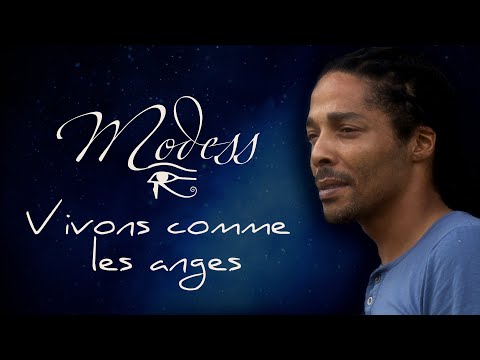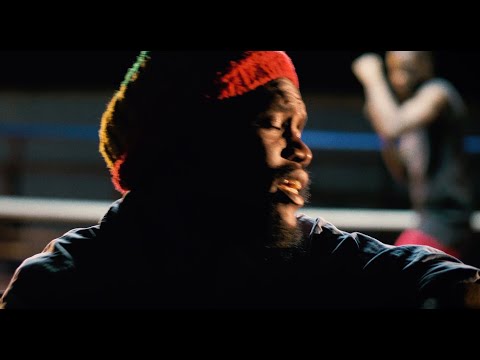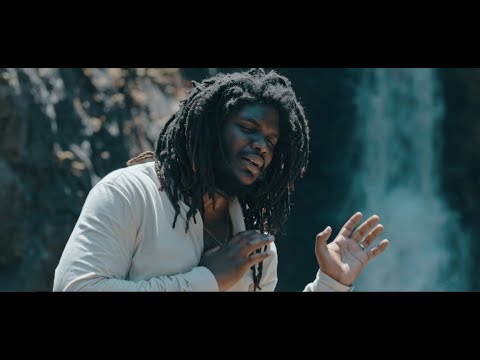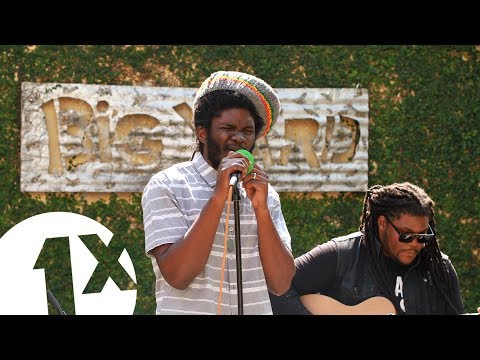Articles about reggae music, reviews, interviews, reports and more...
Interview: Leroy Sibbles in Kingston (Part 1)
- Home
- Articles
- Interviews
- Interview: Leroy Sibbles in Kingston (Part 1)

Interview: Leroy Sibbles in Kingston (Part 1)
"There was no Heptones before me".
Sampler
Leroy Sibbles’ legacy in Jamaican music is enormous and twofold. From 1962 until the late 70s he was lead singer, chief songwriter and recognisable face of hugely popular rocksteady and reggae harmony group the Heptones. In parallel, he was the main session bass player at the place where the trio cut their most enduring hits, Studio One Records. There he laid memorable lines to some of 13 Brentford Road’s perennially revived rhythms. When his Studio One musical mentor Jackie Mittoo left Jamaica for Canada, Leroy took over as senior musician – contributing to many more classic backings through the latter part of the label’s golden age.
In 1973 Leroy himself went to Canada, not returning for nearly 30 years. By the end of the 70s he had departed from Earl Morgan and Barry Llewelyn of the Heptones to pursue a solo singing, and later, production career. He re-joined the group again in the mid-90s – although he is not with them at the present time.
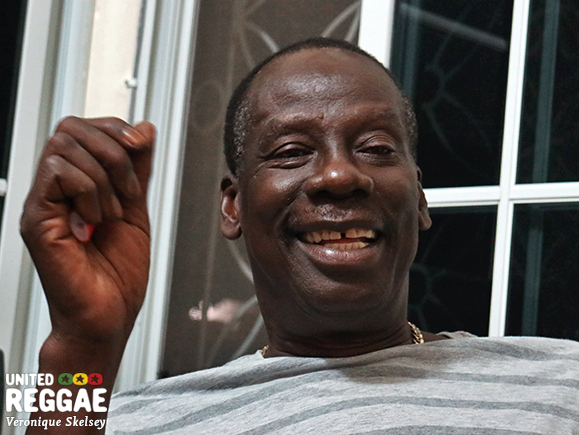
After much searching during February 2017’s Reggae Month, United Reggae locates Leroy at his home in the Havendale area of Kingston. The tall, shaven headed Leroy emerges from behind his electronic gate, looking ageless despite his 68 years. An excitable Shitzu barks loudly on entering the front room. “This is Benjy” says Leroy in his deep grainy voice “He's just making fun. He's a pussycat. He's going to be all over you. He's a toy compared to all the dogs round here”.
Leroy explains that he is building a home studio out back. Once it is complete he will be embarking on new self-produced recordings. He is listening to an old recording of King Stur Gav sound that a friend gave him. He points out one of his bass-lines – “the Kutchie” - among the selector’s choices.
Leroy, as anyone who has met him will know, is not reserved when signposting his contributions to the music. He characterises himself as the Heptones’ primary creative and singing talent. There is friction between him and surviving founder member Earl Morgan - who currently tours without Sibbles under the group’s name. Likewise he positions himself as a driving force at Studio One - arranging many parts of key rhythms beyond the bass.
But it is worth noting that, on several occasions, he corrects secondary sources who claim he played on particular big Studio One releases. Unlike some veteran artists who will assert that anything and everything is their work, Leroy’s self-confidence seems to stop short of mendacity. And behind his imposing size and princely demeanour is an endearing desire for affirmation. More than once, when talking about the songs and bass-lines he is most proud of, he asks “You like that one too, right?”
Unfortunately, this 2 Part interview was one of seven that took place back-to-back in a single hectic day. The tight itinerary and rush hour traffic meant it didn’t go into the level of historical detail that extra time would have allowed. Part 1 details how a youth from Trench Town joined one of Jamaica’s most beloved harmony trios and record labels.
Is it true that you joined the Heptones later then Barry and Earl?
There was no Heptones before me. Earl keeps putting that story out there. I’ve been telling people all the time I am the one who created the Heptones. All Earl did was find the name. We were searching for names, he came up with that name and we said “Yes”. We all agreed on that. It sounded good. Because of owning the name, he’s created a whole story around the whole thing - but he knows better.
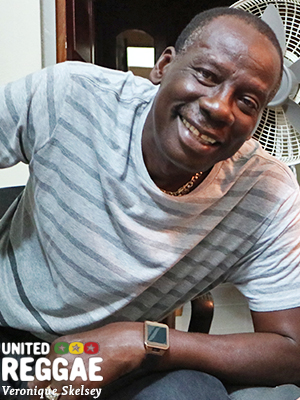 So how did the Heptones start?
So how did the Heptones start?
Good. There were two other members. Two other people before Barry and Earl and myself. There was a girl and we had a little group. Barry and Earl, they were doing their own thing in another section of Trench Town. We’re all from Trench Town. But they were from another section of the community. So we were doing our thing and apparently Barry and Earl heard of us, so they came across and they met us and we were all jamming for a while. They listened to us and we listened to them because we were all young and new to the whole thing. None of us were established yet.
With this group there was a girl singing lead and I was like a backup and that’s how we started our thing there. Barry and Earl came over with a guitar and they said their name was the Mighty Squirrels. He used to say that a long time ago in interviews - if you can go back and listen to some Earl Morgan interviews he used to mention that. Suddenly after a while he changed his story and said that I joined the Heptones. I created the Heptones. Without me there would never have been the Heptones. Because I got in there and turned out to be their teacher. All they learned was from me. I created the songs. They had jobs.
My group broke up - because of some internal affairs. That was after we went to Treasure Isle – the girl and me and another guy called Winston. We went to Treasure Isle and we did an audition there and we were accepted. They wanted us maybe in the next week or so but we broke up before we even did that. So that gave us the opportunity for me and the other two guys now. We were jamming and what happened now was Earl Morgan and Barry came up with a guy from the Pioneers.
Sydney Crooks.
Sydney – exactly. We had no Heptones or no name like that yet - and one night Sydney Crooks came with an idea and said this guy called Ken Lack was seeking new acts. I got excited right away and me and the two guys decided “Let’s form a group and see what we can do - if we can get in there”. That is when the Heptones started. I was doing electric arc welding, Earl was selling the Star, that was his thing, Barry was a body man. He worked on cars.
I gave up my thing right away and stayed home for that first week and wrote the first two songs. Sat there and those was my first songs that I ever wrote that we ever had. One was called Schoolgirls and the other one was called Gunmen Coming To Town. I sat there all day, which became a habit after a while. I worked out all the chords, arranged the arrangements. And when they came from their daily chores - their jobs - I introduced the two songs to them. Sang the songs with an acoustic guitar that I learned to play.
How did you learn the guitar?
Earl was introduced to us with an acoustic guitar but I surpassed his playing in no time. He was the first one to come in the scene with the guitar but I was hungry for this thing, the interest of music got me and when I got my first guitar I sought to learn as fast as I could. I surpassed all the guys that my teacher was teaching. He was a Rastaman called Huntley and he had a lot of people going when I went there. The basic was the do, re, mi and all that! I surpassed that and was hungry for chords and it was that introduction to music that gave me that advancement even to write the songs. I kept learning more on my guitar and the more I learnt - I started writing bigger songs, with more progression.
 I was hungry for this thing
I was hungry for this thing
So the Heptones that afternoon when they came, we practised the two songs. We practised them for about two or three nights and then we said “Okay we’re going to go and check Ken Lack”. So we said we wanted a name and we started searching. Earl Morgan came up with the name Heptones and I said “It sounds good“. To me it sounded like when you are spelling it out “hep ones”. Like groovy, you know? (Laughs) And that was his input in there but all at least 99 or 95% of the songs were written and sung by me. From that time till then.
We went to Ken Lack, we sang the songs and he liked the songs and said “Come back”. We recorded the two songs and we heard them on the air for the first time and that was a big boost for our morale, our vibes and everything. So I really sat down and started writing and when they came in at nights there were always at least two new songs. We practised a portion of songs that I wrote, I gave them all the harmony parts. All the parts were written before these guys came in in the afternoon. Because I had all day to do that.
After Ken Lack and his Caltone label, did you audition for any other studios before you went to Coxsone Dodd at Studio One?
No, no. We practised like hell. We got together at like seven, eight o’clock at night and we were practising till 10, 11, 12. We used to get a lot of feedback from the neighbourhood when it started to get late like 10 o’clock. You know, “Shut the hell up!“ (Laughs) Because we weren’t tight yet you know? I guess we were loud too! Because in areas like this, the night is like that. When night comes and gets more quiet you hear the vocals! Until after a while when we been going for two or three months people stopped complaining. They knew it started to get sweet.
But Earl Morgan, the same one who is making all these claims and stuff, he was the hardest head. He worked me too hard. When I gave Barry his part he would catch it and was ready to go. Earl? The flat notes would kill you. He had me rearranging the harmonies because normally harmonies are sat like lead and harmonies on top. He was capable of taking the middle harmony for Barry to go on top. Barry could do that. So if you listen to the song is you find Earl mostly singing but he will sing on top below me, if you understand what I’m saying?
Sometimes it would be too high for him because most of my songs were on a pitch that he couldn’t do. So I would usually have to be singing that part and have him singing lead most of the time as harmony. That’s why that created a new sound too. (Laughs) People thought that was unique! But I wish it wasn’t so deep inside of me - because I wanted most of the time, traditional stuff. Even when we got established even at Studio One, Coxsone’s studio, when we wanted harmonies it was me and Barry doing most of the harmonies. And most harmony when we were doing three parts he would be doing the lead harmony which would be down there, and me and Barry would take the top ones because it would work any other way.
And these are the kinds of things why it would frustrate me and wore me down after a while. I couldn’t even get to develop as a lead singer because I’d always have to be concentrating on him and his thing. Because I had to, not practise him, but drill almost like kindergarten saying “Sing your part over and over and over” and then we would try to get together.
 I would never be seen in my community without my guitar in my hand
I would never be seen in my community without my guitar in my hand
Because after a couple of years we got established so I didn’t want to change that. I didn’t want to find someone else but we needed someone else. From a long, long, long time ago. If Earl was as capable as Barry we would have had a better group because I would’ve been able to concentrate more on my thing. It threw me off a whole lot. I’d be singing lead but I’d be listening to the harmony. It’s distracting. So there are a lot of things that I have lived and kept within myself all of this time. It was a battle. A big obstacle in the group’s momentum and movement forward.
So how did you come to audition for Coxsone?
After we had a few songs, songs like Fatty Fatty. I would never be seen in my community without my guitar in my hand. It was a part of me. That’s how much I loved the music. And I was bursting with inspiration. Most of the songs that I wrote I would just sit there, find a progression, start playing it and the whole song will just flow, just come. Not much pen and paper. Very few songs that I wrote I had to write it down. I would sing that song and as I completed it I could sing it back again like I had it in my head. And that was a bit remarkable to me. I felt that was something special! (Laughs) New songs. new music, you’re going to sit down and work it out. It doesn’t come just like that to most people. You know what I’m saying? Yeah but that’s the gift that I had back then.
 I was bursting with inspiration
I was bursting with inspiration
Even when the Heptones were established and I got in there and they had me playing bass [at Studio One] – the same thing happened. Most of these bass lines made a lot of people hit songs. Like Burning Spear, because I’m the one who played on the very first Burning Spear album. The one with Door Peep Shall Not Enter. That was a great album.
But how did you audition for Coxsone?
They did the auditioning on Sundays. Me and the group, we thought we were ready now so one Sunday we decided “We are going to go and see what’s happening”. It was as if we were meant to be, you know? We went there and we saw the Gaylads and Ken Boothe.
 These bass lines made a lot of people hit songs
These bass lines made a lot of people hit songs
They were doing the audition.
Yes, they were the ones doing the audition. During my time there I saw Coxsone doing auditions too. So we went and faced them and it was our turn to sing. We sang and they liked us. I remember Ken Boothe walking away - turned and walked away inside the studio after hearing us for a little while - but the Gaylads, they stood up for us. They liked us. They said we should come back next week and they are the ones who got us in there. Hail B.B. Seaton. Respect that. And we proved them right you know? (Laughs) Oh yes!
What was the first song you sang?
A Change Is Gonna Come. It did well. I heard that for the first time on Coxsone’s number one sound system with King Stitt in Jonestown one night. Oh yeah man, it was beating perfectly - they loved that. These are the things that really strengthened my musical thing inside of me. Made me want to do more and keep my guitar in my hand and keep creating you know?
I’ll tell you how this thing was working for me so well back then. I was in a truck one Saturday night filled with people going to a dance in the country. From the city to the country for a big dance party thing. And while I was in that truck filled with people, vibes came to me and it was this song. (sings intro to My Guiding Star/How Can I Leave) All of this came to me there. All the music and the song and everything. I took that to the dance and I drank and smoked and danced and in the week I went to the studio and recorded that song. All the parts and everything. That’s the kind of vibes that I had for the Heptones.
So what was the first big hit for Coxsone?
Fatty Fatty.
And that got banned?
They banned it because of that extra interest, you know? That song was written by me one Sunday. I was walking through the community, went into a yard there, was walking and a certain lady came in right after me called Miss B. Barry and Earl were not there. Just me alone walking with my guitar and just for fun I started singing (sings) “I need a…” And the whole song came out.
And everybody loved that song but I thought it was just a little gimmick song. I didn’t attach seriousness to that song but everyone was requesting that song. Coxsone said if I hadn’t sold that song to him, if I had done that song on royalty, I would own half of Jamaica! Can you imagine the kind of money he made from that song? That’s the song that made Jackie Mittoo famous. Because right after we got the major hit Jackie Mittoo did a thing called Ram Jam. Remember that? And then boom!
But the banning of the song - did that actually help?
That did help, yes. Because back then we had one radio station - Rediffusion RJR. That was a cable radio that was attached to the company by cable. We had no wireless system here! So the song played, it was heard about one week or two weeks and someone said “It’s suggestive”. Suggestive? They were there to listen to suggestions! (Laughs) Explicit!
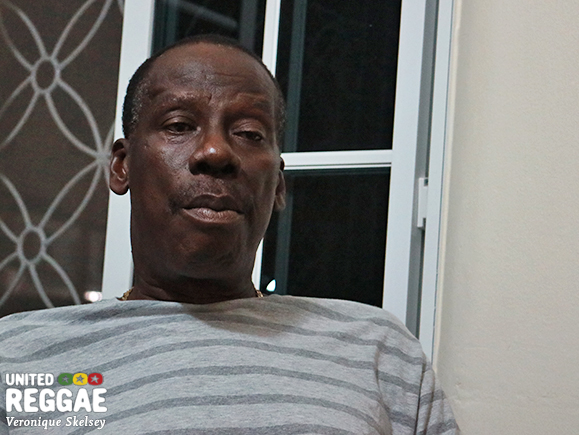
Things are very different today.
Totally right. All I said was “I’m in the mood. I need some food” and that was suggestive! Well it was a little bit suggestive! (Laughs) We had a lot of jukeboxes back then. It was all over the city. Every little bar had a jukebox. So when they said they banned it from the radio - it just started to play everywhere. Every jukebox. Everyone wanted to select the song. “I want to hear this song that is so suggestive! What is it?” It started to create that interest.
It has the reverse effect. It’s great advertising.
Exactly. So boom! A star was born. (Laughs)
Is it right the Coxsone gave you and the group a place to live?
Yes, he did. It was just me. It was just me and it was on Beechwood Avenue.
And how long did you stay there?
Not too long. Maybe a year or two, if that much.
Were you always practising and rehearsing in there?
Always. We did all kinds of things in there.
Were the neighbours okay with that?
Oh yeah. Oh yeah. They had no problem with that. We did most of the practising at the studio. The musical get-together was at the studio. Inside or outside.
A lot of the songs that you did for Coxsone are very uplifting songs.
Yes because I read a lot. I was reading mostly of black issues back in that time. That’s why I came up with songs like [Equal Rights] “Every Man Has An Equal Right To Live And Be Free”. I was reading a book back then on somewhere like South Carolina, somewhere down south where they were tarring and feathering a black man and hanging him and it was like a picnic or a thing. There was a little white kid licking his ice cream and it was a spectacular spectacle on someone’s life you know? And these things touched me - you know what I’m saying? And that’s why I came up with that song. That’s how these kinds of songs are created.
My grandmother was walking one afternoon coming right into her yard facing me and I was sitting there at my gate and she was pulling a little slipper like this - a pull slipper you know? And I could see the poverty you know? And I started singing [Soul Power] “Oh lord, oh lord give me power to set my people free. We want the right to live like free men but poverty is all we see. Now I can’t hide my feelings no more”. So all of these things come from reality.
But what about a song like Tripe Girl? It was a slightly different mood.
(Laughs) Exactly!
What inspired that?
(Big laugh) This was a story on Earl Morgan‘s wife. We fell out. We had a falling out you know? And this song just came up and I said “This one is dedicated to you!” I was kind of rude but at the time that’s how we felt. And we were kids.
A lot of the songs you wrote were in a major key – but there were quite a few that were in a minor key.
Yes, we had another song in a minor key to that this guy wrote. I didn’t write this song it was Bob Clarke. (sings) [I’ve Got A Feeling] “I’ve got a feeling girl, I’ve really got a feeling girl“ and another song we had started in a minor key but was really a major, Why Did You Leave Me To Cry. I was just trying to experiment and that is why the Heptones came out different.
Let’s talk about one other song that you did in Heptones that was in a minor key. It was like a soul tune called One Love. Do you remember that?
Yeah! (Sings verse)
I like that tune a lot.
Yes. I used to love that song too. Goes into a falsetto thing that I used to like.
Did you write that?
Of course. Every song that I sang apart from covers was mine.
I just wasn’t sure because sometimes Coxsone liked to take very obscure soul songs.
True. A lot of songs. A lot of covers. But we didn’t do too many covers. I was writing like crazy.
Is it right that Jackie Mittoo told you to pick up the bass?
He introduced the bass to me. He had a trio because I made him popular so now he was making some money he wanted to involve me back in the business! I’m just joking! (Laughs) He wanted a bass man. He had a drummer. He had a gig like a weekend gig at the club but he didn’t have a bass man. So that’s when I came in there. He said “Leroy, you could do this“.
 Jackie said;"Leroy, you could do this"
Jackie said;"Leroy, you could do this"
I never played bass before that introduction. He said “I have a gig and I want you to play bass Lee“. I guess he knew that I could do it. He saw the songs and he felt my ability. He lived it. He saw the kinds of songs that I wrote, the kinds of progressions. So he kind of knew my headspace. He knew that I was thinking like that. So I said “Jackie, bass? What are you saying about bass? I don’t know“. He said “You can do this man“. We went in the studio and he said “These are the songs we going to do”. He gave me the bass guitar I just had to practise these lines and play them back. That wasn’t so hard. No! And from there was my foot in the door.
What was the first tune you played bass on at Studio One? Was it Baby Why or What Kind Of World by the Cables?
No. I think it was… (Long pause) You know why am contemplating? Ken Boothe came in doing a thing and we recorded three songs back then with Ken Boothe. Maybe those songs were the songs I recorded first. I was with Jackie Mittoo so it would make sense that I would record those songs. That after that introduction on the road he would introduce me to play in the studio. Those are the very first songs. But it was Baby Why and What Kind Of World. He gave me the bass-line for Baby Why. What Kind Of World was my bass-line I started creating. My first bass creation.
Tell me in case some of these are wrong. Did you play bass on Queen of the Minstrel?
Oh yeah.
And you played on Stars?
Uh huh.
 I made Full Up
I made Full Up
Full Up?
I made Full Up. Which turned out to be one of the richest reggae songs ever to come out of Jamaica. The Dutchie.
First Gussie Clarke redid it with the Diamonds. Then they changed pass the Kutchie to pass the Dutchie for Musical Youth.
When Jackie Mittoo made the Musical Youth. Billboard! (Laughs) Musical Youth created the Dutchie and filled the Dutchie with food.
Read more about this topic
Comments actually desactivated due to too much spams
Browse by categories
Recommended Articles
Latest articles
Recently addedView all
© 2007-2026 United Reggae. All Rights Reserved. Reproduction in whole or in part is prohibited. Read about copyright
Terms of use | About us | Contact us | Authors | Newsletter | A-Z
